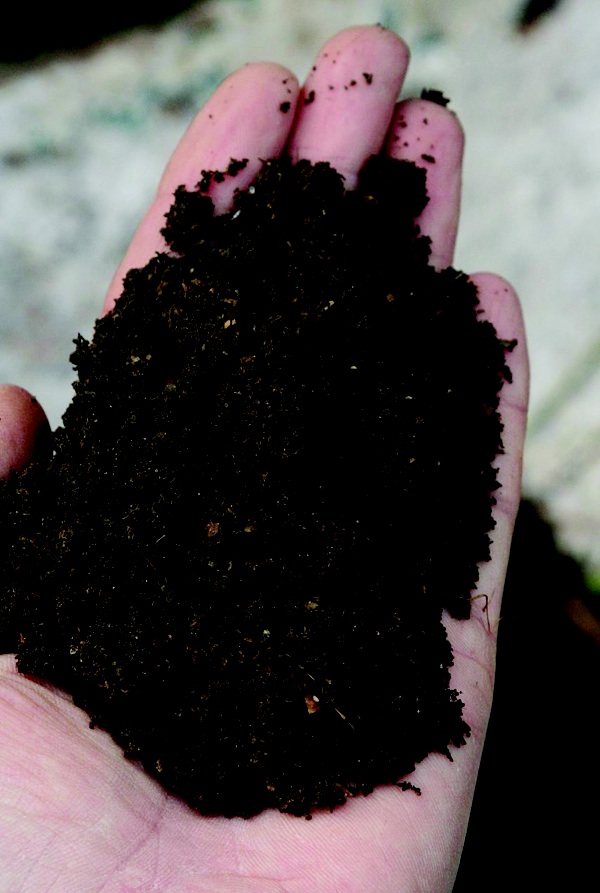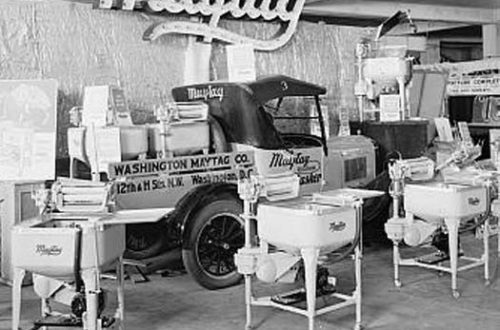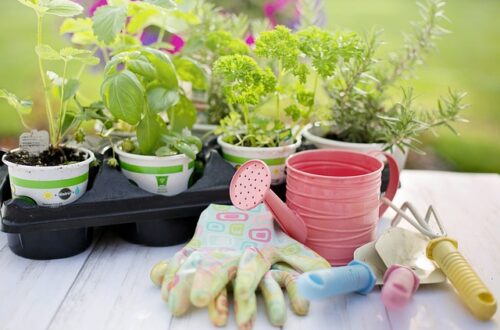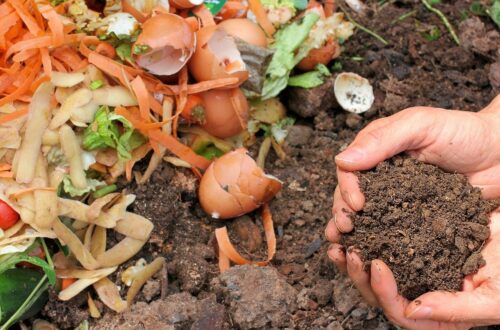More and more, people recognize that putting organic matter in a landfill is a waste of both money and natural resources. Organic material in a landfill decomposes anaerobically (without oxygen), releasing harmful methane. You can do your garden and the planet a good turn by turning your organic spoils into food for the earth.
Composting returns elements to the soil where plants can use them and the nutrients can continue to nourish the cycle of life. It also reduces climate-changing gas emissions and is an easy, inexpensive way to enrich gardens. Compost helps a garden to thrive – improving clay soil, allowing air and moisture to penetrate the soil, and plants to absorb nutrients.
The Recipe for Compost is to Think SMART!
In nature, organic material decomposes thanks to help from microbes (microscopic bacteria, plants, and animals) and larger decomposers like worms, insects, and other invertebrates. Composting is controlled decomposition – we create a habitat for decomposers and they do the dirty work!
If you’ve never done it before, composting may seem complicated, but it’s easy. The acronym SMART will help you to remember how to make compost.
Size Matters – The ideal size for a backyard compost pile is at least 3’x 3’ x 3’ (1 cubic yard). The size of the organic material matters too. A mixture of sizes of material is OK, as long as the material is mostly less than 2” in size.
Moisture – Compost should feel about as wet as a wrung-out sponge. You may need to cover open piles in winter to keep water out, and in summer to keep moisture in. If your pile is dry, hose it a bit to get it wet enough for the decomposers to work efficiently.
Aeration – Compost needs oxygen to support microbial activity and prevent bad smells. Composting is accelerated if you turn the pile every so often to redistribute materials and allow air and moisture to get in.
Ratio – Compost should have about a 1:1 ratio by volume of “green” (fresh, nitrogen-rich) materials and “brown” (dryer, carbon-rich) materials. One bucket of browns to one of greens is the general rule. Remember this mantra:
Equal Parts Green and Brown, Help to Break the Compost Down
Turn – Think SMART and turn your yard and kitchen spoils into soil. By composting, you sustain the health of our planet by keeping natural resources in beneficial use and feeding the earth instead of a landfill.
The Catch 22 of Composting
In summer, our yard and kitchen generate lots of greens but not many browns. In the fall, we get lots of leaves falling (a great “brown”), but the greens become scarce. What to do? Stockpile dry browns and make a cache in an extra bin or heavy-duty yard debris bag, and squirrel them away until spring. This gives you a ready source of browns to mix with greens in your pile next spring and summer. If you don’t have leafy trees, look for a neighbor who does. They may be happy to share! If you are short on greens, look no further than your local coffee shop – most are happy for you to take their used grounds away for productive use.
Creative Composting
There are many household items that you may not think to compost: cotton tipped swabs, (paper not plastic stems); dryer lint if you dry only cotton clothing; used tissues, paper towels, and napkins; pet and human hair (a source of nitrogen); even your shredded credit card statements! In general, if something came from the earth, it can return to the earth.
“All things come from the earth, and all things return to the earth”
– Xenophanes, 580 B.C.
In Or Out Of The Compost?
Greens: Grass clippings, coffee grounds, fruit and vegetable scraps, fresh garden plant and hedge trimmings, deadheaded flowers, tea bags, egg shells, fresh leaves, manure from horses, cows, chickens or rabbits.
Browns: Dried leaves, tissue, paper towels and napkins, straw, twigs, chipped wood, hair, coffee filters, newspaper, shredded bills, cotton lint.
Keep Out of Pile: Invasive plants, crabgrass, weeds that have flowered or gone to seed, diseased plants, meat, bones, dairy, fats, pet waste, charcoal, glossy colored paper.
Compost Happens! Fast or Slow is Up to You
By building a pile that is at least one cubic yard in size; managing the moisture; remembering the equal parts green and brown guideline; and turning it every few days – you’ll nurture the microbes, speeding up decomposition. This method can generate usable compost in as little as two months. Building a pile all at once like this is called “batch,” or “hot composting.”
You can also simply add materials as you generate them, do nothing, and your pile will eventually compost. This happens in nature all the time! This type of “passive” or “cold composting” is slower, and may have viable weed seeds in it, but is less work. Often, cold compost is filled with helpful earthworms. No matter which method you choose, it’s all-good because after all, a rind is a terrible thing to waste!
Finished compost has a rich, dark color, soil-like texture, and earthy aroma. You can no longer identify the parent materials. Another way to see if it is done is to do a plastic bag test. Take a handful of compost, put in a plastic bag and seal it. Keep the bag at room temperature for a few days. Then open the bag and smell the contents. It should have a pleasant, earthy, soil-like smell. A bad odor indicates the compost is not completely done.
Remove compost from your pile using a shovel or pitchfork, or sift it into a wheelbarrow. Spread compost 2-3 inches deep as mulch over your garden, blend it with soil to nourish potted plants, or apply as mulch around the root zone of trees and shrubs.
Jo Anne Dolan is Sustainability Program Director at Columbia Springs and coordinates Clark County’s Master Composter/Recycler Program. The program offers free backyard composting workshops.
For more info: http://www.columbiasprings.org






4 Comments
lawn aerating
This offers several advantages for many who will not have time to
mow the lawn as often because it is necessary employing
a gas-powered device or push mower. The key is to make sure you are aerating at a time when water can filtrate to the roots.
You may consider edging the corners in the lawn where you want
the grass to halt growing because this provides a neater appearance in the event
the grass has grown.
option binaire
Wow, that’s what I was exploring for, what a stuff! existing here at this weblog,
thanks admin of this web site.
Shelle @ PreparednessMama
Great article! My family just moved to the country and we ditched our commercial garbage service. I’ve set up a kitchen scrap compost system so this post is much needed. I’m a big believer in SMART goals. Thanks for introducing me to SMART composting.
Jeffrey'S Blog
Everyone loves it when folks come together and share views.
Great website, continue the good work!